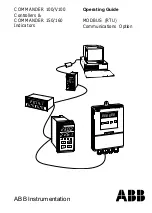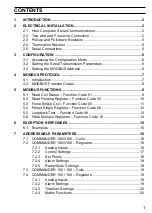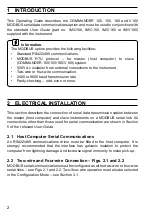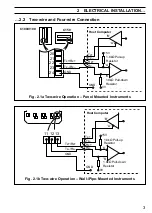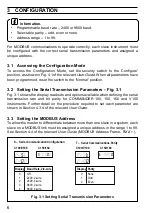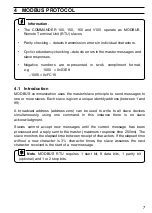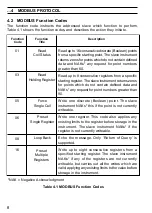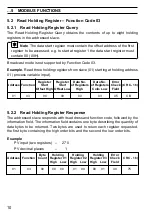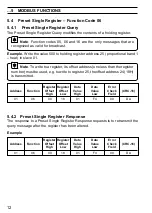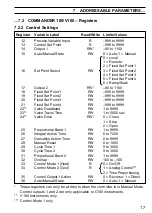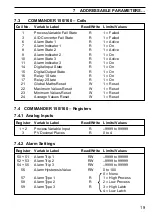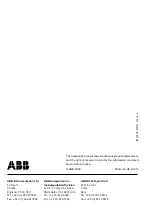
7
4
MODBUS PROTOCOL
Information.
•
The COMMANDER 100, 150, 160 and V100 operate as MODBUS,
Remote Terminal Unit (RTU) slaves.
•
Parity checking – detects transmission errors in individual characters.
•
Cyclic redundancy checking – detects errors in the master messages and
slave responses.
•
Negative numbers are represented in two's compliment format.
e.g
1000 = 0x03E8
–1000 = 0xFC18
4.1
Introduction
MODBUS communication uses the master/slave principle to send messages to
one or more slaves. Each slave is given a unique identity address (between 1 and
99).
A broadcast address (address zero) can be used to write to all slave devices
simultaneously, using one command. In this instance there is no slave
acknowledgment.
Slaves cannot accept new messages until the current message has been
processed and a reply sent to the master (maximum response time 250ms). The
slave monitors the elapsed time between receipt of characters. If the elapsed time
without a new character is
3
1
/
2
character times, the slave assumes the next
character received is the start of a new message.
Note. MODBUS RTU requires 1 start bit, 8 data bits, 1 parity bit
(optional) and 1 or 2 stop bits.

